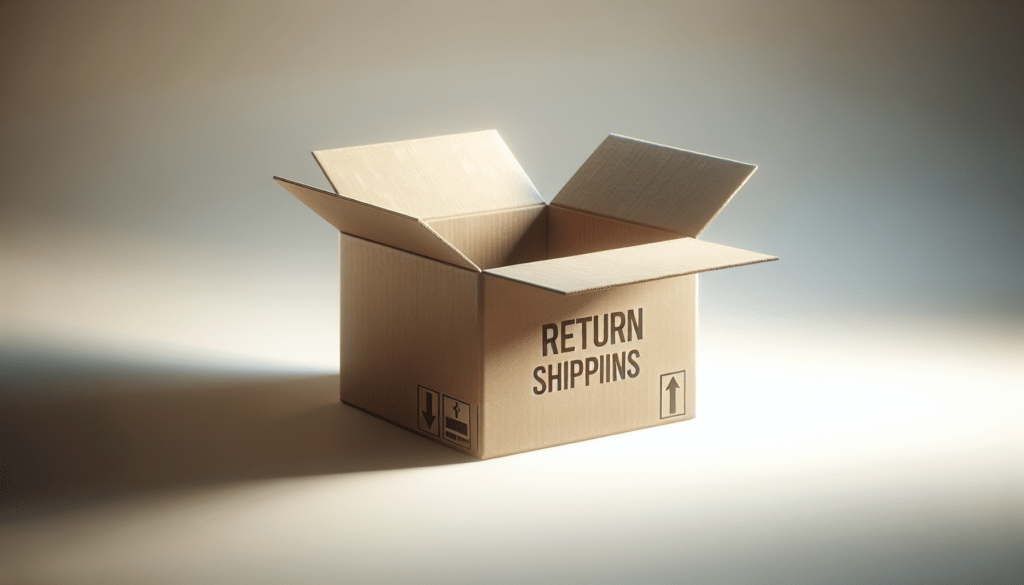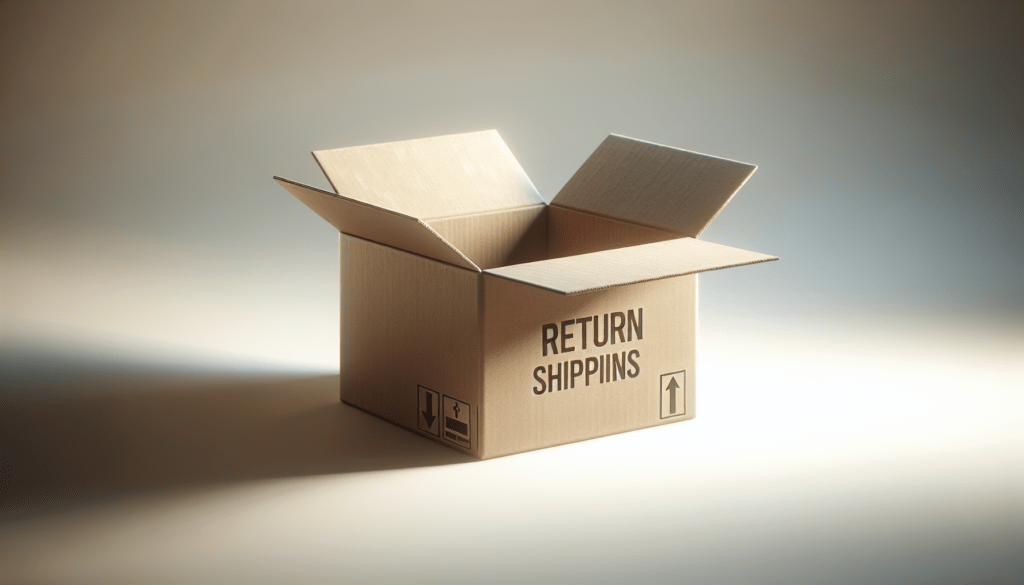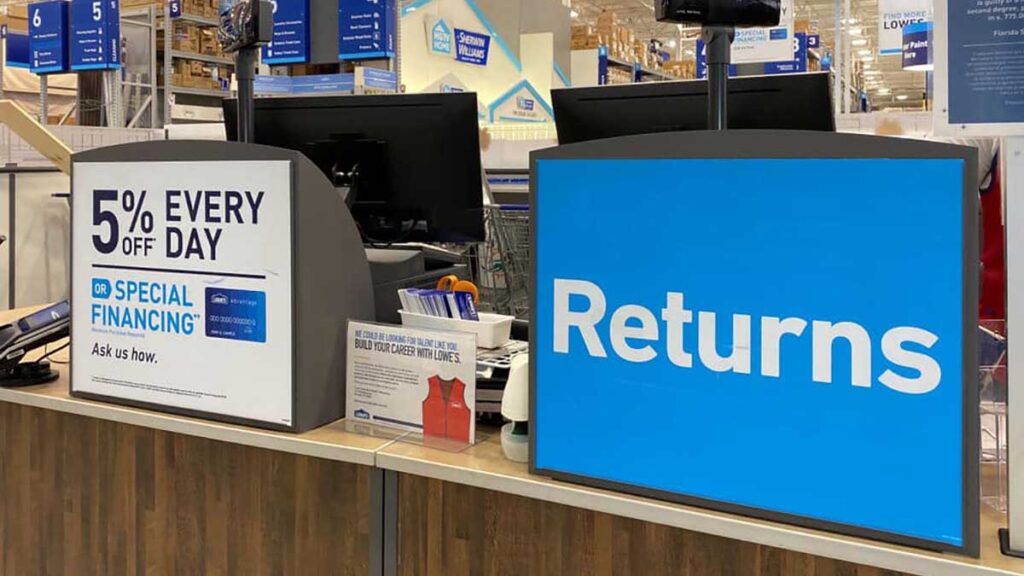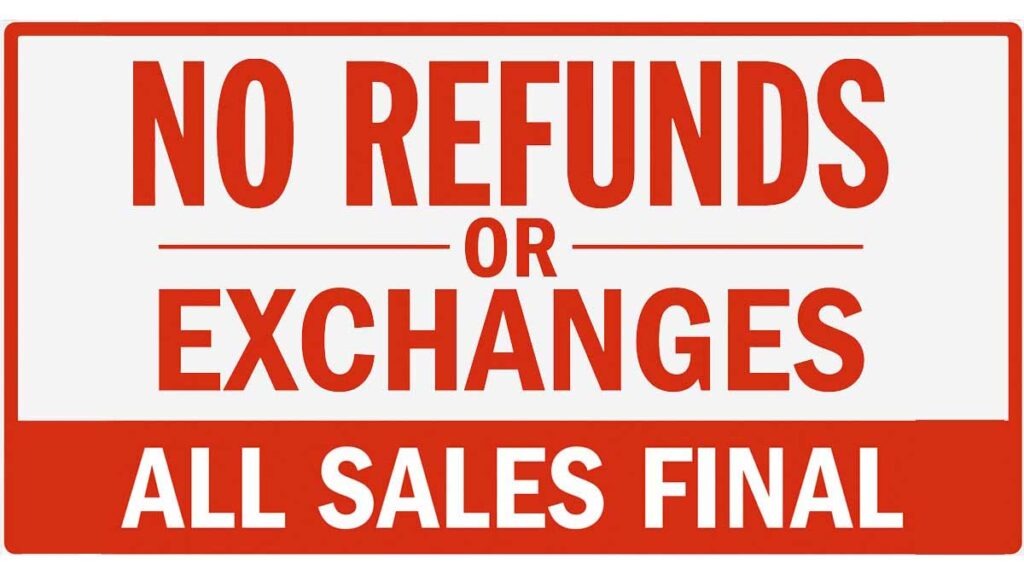Are you tired of being confused about return shipping costs? Look no further! This comprehensive guide will provide you with all the information you need to understand and navigate the world of return shipping costs. Whether you’re a buyer or a seller, this article will break down the different types of return shipping costs and give you tips on how to minimize them. So sit back, relax, and let us take you on a friendly journey through the complexities of return shipping costs.

Understanding Return Shipping Costs
Return shipping costs refer to the expenses associated with shipping a product back to the retailer or seller after it has been purchased and then returned by the customer. These costs can vary depending on a number of factors, and understanding them is essential for both customers and retailers.
Factors Influencing Return Shipping Costs
There are several factors that influence the return shipping costs. These include:
Distance
The distance between the customer and the retailer plays a significant role in determining the return shipping costs. Longer distances generally result in higher shipping fees due to increased transportation expenses.
Weight
The weight of the returned item is another important factor. Heavier items require more resources to ship, such as fuel and manpower, which can lead to higher shipping costs.
Dimensions
The dimensions of the package are also taken into account. Bulkier packages take up more space and may require additional handling or special arrangements during transportation, which can increase the shipping costs.
Shipping Method
The chosen shipping method will also impact the cost. Faster shipping options like overnight or express delivery tend to be more expensive than standard shipping, as they prioritize speed and efficiency.
Return Shipping Options
When it comes to return shipping, there are several options available for both retailers and customers. These options include:
Retailer’s Prepaid Label
Some retailers offer prepaid return labels for their customers. This means that the retailer covers the cost of return shipping, making the process more convenient for the customer. However, keep in mind that this convenience may be reflected in the overall price of the product.
Customer-Paid Shipping
In many cases, customers are responsible for covering the return shipping costs themselves. This option allows them to choose their preferred carrier and shipping method, but they will need to cover the expenses out of their own pocket.
Carrier Pickup
For larger or heavier items, customers may opt for carrier pickup services. This option involves scheduling a pickup with the carrier, who will then come to the customer’s location to collect the item. While this can be more convenient, it often comes with an additional fee.
Calculating Return Shipping Costs
There are several methods for calculating return shipping costs. These include:
Standard Rate Chart
Some carriers offer standard rate charts that outline the cost of shipping based on factors like weight, distance, and dimensions. These charts can be used as a reference point to estimate the return shipping costs.
Real-Time Rates
With advancements in technology, many carriers now offer real-time rates. This means that the shipping cost is calculated based on the exact weight, dimensions, and destination of the package. Real-time rates provide customers with accurate shipping costs, eliminating any guesswork.
Shipping Calculators
Online shipping calculators are another useful tool for estimating return shipping costs. By inputting the necessary information about the package, customers can receive an instant quote from multiple carriers, allowing them to compare prices and choose the most cost-effective option.
Negotiating Return Shipping Costs
In some cases, customers may have the opportunity to negotiate return shipping costs with the retailer or seller. This is especially true for higher-value items or when dealing with a flexible seller who is open to discussion. To negotiate return shipping costs, it is important to be polite, explain the reasons for the return, and propose a mutually beneficial solution.
Tips for Reducing Return Shipping Costs
To minimize return shipping costs, consider the following tips:
Choose Lightweight Packaging
Using lightweight packaging materials, such as bubble mailers or padded envelopes, can help reduce the weight of the package, thereby lowering shipping costs. However, it is important to ensure that the packaging still provides adequate protection for the product.
Optimize Packaging Dimensions
Choosing packaging dimensions that closely match the size of the product can prevent unnecessary dimensional weight charges. Avoid using oversized boxes or excessive packaging materials, as they can increase shipping costs.
Use Flat Rate Shipping
If the item being returned fits within the dimensions allowed by flat rate shipping, consider using this option. Flat rate shipping charges are predetermined and often offer cost savings for heavier items or packages traveling longer distances.
Negotiate Volume Discounts
If you anticipate making multiple returns or regularly shipping items back to the same retailer, consider negotiating volume discounts for return shipping. Many retailers value customer loyalty and may be willing to offer discounted shipping rates.
Return Shipping Policies of Major Retailers
Different retailers have different return shipping policies. Here are the return shipping policies of some major retailers:
Amazon
Amazon offers several return shipping options, including prepaid labels for eligible items. Customers can print these labels and drop off the package at a designated carrier location. Amazon also provides the option for customers to pay for their own return shipping.
Walmart
Walmart allows customers to return items through various methods, including in-store returns and online return shipping. The return shipping costs are typically the customer’s responsibility, but Walmart occasionally provides prepaid labels for certain items or circumstances.
eBay
On eBay, the return shipping costs are determined by the seller. Sellers can choose to offer free return shipping or have the buyer pay for return shipping. It is important to check each individual listing to understand the specific return shipping policy.
Target
Target’s return shipping options vary depending on the item and reason for return. Customers can choose to return items in-store or through mail using a prepaid return label. The cost of return shipping is typically deducted from the refund amount.
International Return Shipping Costs
Returning items internationally adds additional complexities and costs. In addition to the factors mentioned earlier, international return shipping costs may also include:
Customs Fees
When shipping items internationally, customs fees may be imposed by the destination country. These fees are typically the responsibility of the customer and should be taken into account when calculating the overall return shipping costs.
Import Taxes
Import taxes are another potential cost for international return shipping. These taxes are usually levied by the customs authority and are based on the value of the returned item. Import taxes can significantly impact the final cost of returning an item internationally.
Duties and Tariffs
Similar to import taxes, duties and tariffs may be applied to international return shipments. These fees are set by the destination country’s government and can vary depending on the nature of the returned item. Customers should be aware of these potential costs when returning items internationally.
Tracking Return Shipments
Tracking return shipments is crucial for both customers and retailers. It provides peace of mind and allows for easy monitoring of the package throughout the return process. Here are some tracking options commonly used:
Carrier Tracking Services
Most carriers offer tracking services that allow customers to monitor the progress of their return shipment. Customers can track the package using the provided tracking number on the carrier’s website or through their mobile application.
Delivery Confirmation
Delivery confirmation services provide proof that a package has been successfully delivered to the retailer or seller. This is particularly useful for customers returning high-value items or when dealing with unreliable carriers.
Insurance Options
Consider opting for insurance coverage when returning valuable items. This provides protection against loss or damage during transit. Insurance coverage can help alleviate any financial loss in case of unforeseen circumstances.
Returns and Refunds
Understanding the return policy of the retailer is crucial when it comes to returns and refunds. Each retailer has its own policy, so it is important to familiarize yourself with the terms and conditions. Key points to consider include:
Return Policy Matters
Review the return policy of the retailer before making a purchase. Understanding the conditions for returns, such as time limits, acceptable reasons, and any associated fees, can save time and avoid potential frustration when initiating a return.
Refund Processes
Different retailers may have different refund processes. Some may offer a full refund, while others may deduct restocking fees or shipping costs from the refund amount. Familiarize yourself with the retailer’s refund process to ensure a smooth and satisfactory experience.
In conclusion, return shipping costs can vary based on factors such as distance, weight, dimensions, and shipping method. Understanding the return shipping options, calculating costs using standard rate charts or real-time rates, and considering negotiation tactics can help customers minimize return shipping expenses. By following tips such as choosing lightweight packaging, optimizing dimensions, using flat rate shipping, and negotiating volume discounts, customers can further reduce return shipping costs. It is also important to familiarize yourself with the return shipping policies of major retailers, consider international return shipping costs including customs fees, import taxes, and duties, and utilize tracking services and insurance options for peace of mind. By understanding the return policy and refund processes of retailers, customers can streamline the return process and ensure a satisfactory experience.




